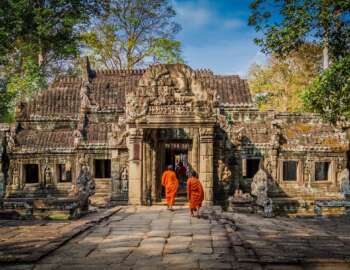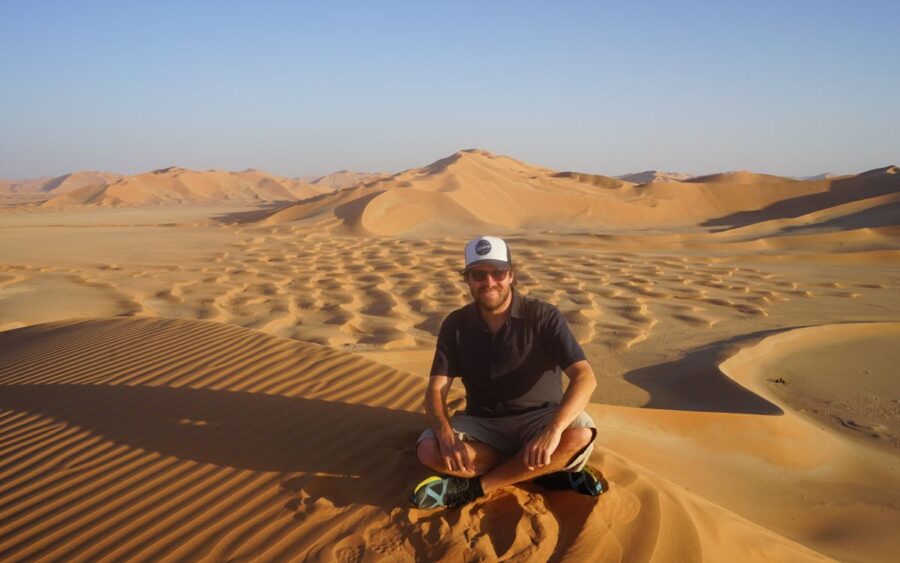These documentaries about Cambodia show a nation steeped in a complex tapestry of history, resilience, and cultural richness, from the ancient temples of Angkor Wat to the scars left by the Khmer Rouge regime, Cambodia’s story is one of both breathtaking beauty and profound tragedy.
Documentaries About Cambodia
Documentaries about Cambodia delve into the heart of this Southeast Asian nation, exploring its past, present, and the indomitable spirit of its people and offering a poignant and immersive journey.
Don’t Think I’ve Forgotten: Cambodia’s Lost Rock and Roll (2014)
Don’t Think I’ve Forgotten: Cambodia’s Lost Rock and Roll explores the vibrant rock and roll music scene that flourished in Cambodia from the late 1950s to the 1970s before the Khmer Rouge regime took over in 1975.
The film tells the story of how Western rock and roll and pop music, along with traditional Cambodian sounds, influenced and merged to create a unique and thriving music scene in Cambodia. It features interviews with surviving musicians, friends, and family members, as well as archival footage and recordings of the music from that era.
When the Khmer Rouge came to power, they sought to erase any form of Western influence, including music, and targeted musicians and artists. Many musicians were killed, and much of the recorded music was destroyed. The documentary sheds light on this tragic chapter in Cambodia’s history and the impact it had on the country’s music and culture.
“Don’t Think I’ve Forgotten” is not only a tribute to the lost musicians and their music but also serves as a historical document that helps preserve the memory of Cambodia’s vibrant rock and roll scene before it was silenced by the horrors of the Khmer Rouge regime. This is one of my favourite documentaries about Cambodia to watch.
S21: The Khmer Rouge Killing Machine (2003)
S21: The Khmer Rouge Killing Machine provides a chilling and powerful look into the atrocities committed by the Khmer Rouge regime in Cambodia during the 1970s. The film specifically focuses on Tuol Sleng Genocide Museum, also known as S-21, which was a former high school in Phnom Penh transformed into a notorious prison and torture centre by the Khmer Rouge.
The documentary includes interviews with both survivors and former Khmer Rouge perpetrators who worked at S-21. It explores the stories of those who were imprisoned, tortured, and often killed at the hands of the Khmer Rouge. The film delves into the psychological impact on both the victims and the perpetrators, shedding light on the brutality and dehumanization that occurred during this dark period in Cambodian history.
Rithy Panh, the director, himself a survivor of the Khmer Rouge regime, uses a combination of survivor testimonies, reenactments, and footage from the Khmer Rouge era to construct a haunting narrative.
Having visited the S21 prison myself and seeing the horror of what happened there I can highly recommend this as one of the documentaries about Cambodia for you to watch to get an insight into this tragic part of Cambodia’s history.
A River Changes Course (2013)
A River Changes Course explores the impact of economic development and globalization on traditional Cambodian ways of life. The film follows the lives of three individuals and their families in Cambodia, showcasing the challenges they face in the rapidly changing social and environmental landscape.
The three main subjects of the documentary come from different backgrounds:
- Sari Math: A young girl living in a fishing family, her life is deeply connected to the Mekong River.
- Sav Samourn: A mother of two who lives in a rural village, facing the pressures of deforestation and the encroachment of modernity.
- Khieu Mok: A factory worker in Phnom Penh, experiencing the urbanization and industrialization of Cambodia.
Through these personal stories, “A River Changes Course” addresses issues such as deforestation, the impact of globalization on traditional industries, and the consequences of rapid development. The film provides a glimpse into the lives of ordinary Cambodians and the choices they must make in the face of profound changes.
Angkor Wat: The Ancient Mystery Of Cambodia’s Lost Capital
No list of documentaries about Cambodia would be complete without something on the stunning Angkor Wat.
This is a free documentary on YouTube to watch that explores 900-year-old Angkor Wat, the famed “City of the God Kings”, through archaeology, computer graphics and re-enactment, it shows this stunning “lost city.”
This is one of the best documentaries about Cambodia to watch if you have an interest in ancient history.
Angkor Awakens: A Portrait of Cambodia (2017)
Angkor Awakens: A Portrait of Cambodia provides a contemporary look at Cambodia, exploring its history, culture, and the challenges it faces in the modern era. The film covers a range of topics, including Cambodia’s rich cultural heritage, the impact of the Khmer Rouge regime, the process of rebuilding the nation, and the efforts to address social and economic issues.
Angkor Awakens features interviews with a diverse group of individuals, including political leaders, artists, activists, and everyday citizens, offering a multifaceted perspective on the country.
The documentary aims to showcase Cambodia’s resilience and its ongoing journey of recovery and development. It addresses not only the traumatic past, particularly during the Khmer Rouge era, but also the contemporary issues facing the country.
Additionally, the film highlights the efforts of individuals and organizations working towards positive change in Cambodia.
Enemies of the People (2009)
Enemies of the People delves into the tragic history of the Khmer Rouge regime in Cambodia. It specifically focuses on Thet Sambath’s personal journey to understand and uncover the truth about the Killing Fields and the individuals responsible for the atrocities committed during that period.
Thet Sambath, the co-director and a Cambodian journalist, lost family members to the Khmer Rouge, and his personal connection to the events serves as a driving force behind the documentary. Over several years, Sambath gained the trust of Nuon Chea, the chief ideologist of the Khmer Rouge, who eventually opened up and provided insights into the regime’s decision-making processes and the reasons behind the mass killings.
“Enemies of the People” combines interviews with former Khmer Rouge members, including Nuon Chea, with archival footage and recreations to create a powerful narrative. The film explores the complexities of truth, justice, and reconciliation, as well as the personal toll of confronting a painful history.
The Missing Picture (2013)
The Missing Picture is a unique and deeply personal exploration of the filmmaker’s experiences during the Khmer Rouge regime in Cambodia.
Rithy Panh uses a combination of archival footage, reenactments using clay figurines, and his own narration to tell the story of his family’s and his own struggles during the Khmer Rouge era. The film’s title, “The Missing Picture,” refers to the gaps in history and the absence of visual documentation for certain aspects of the Khmer Rouge atrocities.
The documentary provides a poignant and artistic perspective on the director’s memories of the time when he and his family were forced into labour camps and faced the brutalities of the Khmer Rouge regime. The use of clay figurines adds a unique visual element to the storytelling, creating a powerful and evocative representation of the past.
“The Missing Picture” received widespread acclaim for its innovative approach to documentary filmmaking, its emotional impact, and its contribution to preserving the memory of the Khmer Rouge era.
A Cambodian Spring (2016)
A Cambodian Spring” is a documentary film directed by Chris Kelly. It was released in 2016 and provides an intimate and thought-provoking look at the complex and often tumultuous land rights protests in Cambodia.
The documentary focuses on the lives of three individuals involved in the activism and protests:
- Venerable Luon Sovath: A Buddhist monk who becomes a vocal advocate for land rights and social justice.
- Toul Srey Pov: A young mother fighting against the forced eviction from her home in a Phnom Penh slum.
- Tep Vanny: A prominent human rights activist who leads protests against land grabs and injustices.
The film captures the struggles and sacrifices of these individuals as they confront powerful interests, including government authorities and corporations, in their fight for justice and the right to land. The protests depicted in “A Cambodian Spring” occurred in the context of Cambodia’s rapid economic development and urbanization, leading to disputes over land rights and forced evictions.
The documentary provides a nuanced and personal perspective on the complexities of activism in Cambodia, highlighting the risks and challenges faced by those advocating for social change.
Red Wedding (2012)
Red Wedding is a powerful exploration of the experiences of Cambodian survivors of forced marriages during the Khmer Rouge regime.
The film focuses on the personal stories of women who were forced into marriages during the Khmer Rouge’s rule in Cambodia from 1975 to 1979. The Khmer Rouge, led by Pol Pot, aimed to create an agrarian communist society and implemented radical policies, including forced marriages, as a means of social engineering.
Families were torn apart, and individuals were paired off in unions dictated by the Khmer Rouge leadership.
“Red Wedding” features interviews with survivors who recount their experiences and the lasting impact of forced marriages on their lives. The title refers to the traditional Khmer wedding colour, symbolizing both the cultural significance of weddings and the tragedy of the forced unions imposed by the Khmer Rouge.
The Killing Fields (1984)
Although this is not a documentary about Cambodia it is an astounding film.
The Killing Fields is a historical drama that tells the true story of the experiences of two journalists, American Sydney Schanberg, and Cambodian Dith Pran, during the Khmer Rouge regime in Cambodia.
The central characters, portrayed by Sam Waterston as Schanberg and Dr. Haing S. Ngor as Dith Pran, work as journalists covering the events in Cambodia during the early 1970s, including the rise of the Khmer Rouge. As the Khmer Rouge took control of Cambodia in 1975, Schanberg returned to the United States, while Dith Pran remained in Cambodia and became a victim of the brutal regime.
The film depicts the horrors of the Khmer Rouge era, including forced labour, mass executions, and other atrocities committed by the regime. Dith Pran’s harrowing journey to survive the genocide and his eventual escape from Cambodia are central to the narrative. The title, “The Killing Fields,” refers to the mass graves where countless victims of the Khmer Rouge were buried.
It remains a significant and impactful film that sheds light on the atrocities committed during one of the darkest chapters in Cambodian history.
Cambodia

These documentaries about Cambodia collectively offer a mosaic of the country’s history, from its ancient and also tragic past to its resilient present, providing you with a deeper understanding of the nation’s complex and multifaceted narrative.
For more on the region have a look at the 10 best documentaries about Thailand to watch.
Share the best documentaries about Cambodia:





